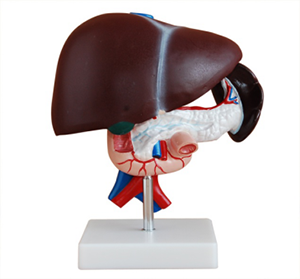Homepageпјҡ NEWS >> Is the market demand for hepatopancreatic duodenal models growing rapidly?
With the deepening of medical education and clinical training, hepatopancreatic duodenal model, as a highly simulated medical simulation tool, has become an important part of many medical institutions and educational platforms. So, is the market demand for hepatopancreatic duodenal models growing rapidly? This problem has aroused wide concern.
I. Increased demand for medical education
With the continuous transformation of medical education to higher quality training, especially the education of surgery and organ anatomy, hepatopancreatic duodenal model is increasingly favored by major medical schools and hospitals. These models help students and physicians to perform risk-free training in a simulated environment, familiarizing themselves with the anatomy and surgical procedures of complex parts such as the liver, pancreas, and duodenum. According to the analysis of industry experts, the global medical education market is growing rapidly, and the demand for liver, pancreaticoduodenal models is growing in step with this, especially in anatomy, surgical training and medical pathology learning.

Hepatopancreatic duodenal model
Data support:
According to the market research report, the medical education and training equipment market is expected to grow at an annual rate of about 7% until 2028. In particular, anatomical models with high fidelity are expected to be a major driver of market growth, with liver, pancreaticoduodenal models growing by more than 15% over the next five years.
II. Key tools for clinical skills training
With the advancement of medical technology, the training requirements for surgical operations, especially complex liver, pancreas and duodenal operations, are gradually increasing. The hepatopancreatic duodenal model is an important tool for clinical skills training, providing accurate anatomical details and helping physicians practice difficult operations in a simulated environment. Experts point out that the popularity of this model is providing doctors with more opportunities to prepare for surgery, reducing risks in actual practice.
III. Technological innovation drives demand growth
The continuous technological innovation of hepatopancreatic duodenal model, especially the improvement in the degree of imitation and interaction, makes its demand in the market more and more. Modern models not only provide accurate anatomy, but also simulate disease states (such as cirrhosis, pancreatic cancer, etc.), allowing for more realistic training. As these model technologies continue to improve, their application scenarios in medical education continue to expand.
Summary:
The market demand for hepatopancreatic duodenal models is indeed growing rapidly, mainly due to the increasing demand for high-quality training equipment in medical education. With the continuous upgrading of surgical training, anatomy education and clinical skills, hepatopancreatic duodenal model will occupy an increasingly important position in the future medical training. The combination of its technological innovation and market trends has steadily increased its demand in the industry, providing solid support for medical education and clinical training.